Converting between units of Conversion Of Hours To Minutes. Displaying all worksheets related to - Conversion Of Hours To Minutes. Converting units of time - Grade 3 Telling Time Worksheets, Grade 3 math worksheets on converting between units of time including seconds, minutes, hours, days, weeks, months and years . Free time and calendar Converting Hours To Minutes.
Showing top 8 worksheets in the category - Converting Hours To Minutes. Free time and calendar Converting Minutes To Hours. Displaying all worksheets related to - Converting Minutes To Hours.
Our employee time clock calculator automatically does time clock conversion from hours and minutes to decimal time. It can also calculate military time for payroll with the 24 hour military time clock setting. You can specify how you want to round decimal hours in the calculator settings. I am constucting a time sheet that is driving me nuts. The following formula calculates the employees total time worked in one day . The input cells (time in/out) are time formated.
The total hours worked cell is formated as number w/2 decimal places. I can not come up with the correct formula to convert the decimals to tenths of hours and have it match my companies conversion chart. Time clock conversion means converting your employees' work hours and minutes into decimals—in order to calculate their salaries. Here's an hours calculator you can use to do just that.
Just enter times from your employees' time cards on the left to get the decimal hours on the right. Additions and subtractions for time done on a calculator without converting minutes to tenths or hundredths causes confusion when verifying or calculating employee hours. Without converting the minutes to hundredths, the caluclations can be off because an hour contains 60 minutes and regular calculations done on a calculator are displayed in units of 100.
A second is part of other units, such as frequency measured in hertz (inverse seconds or second−1), speed and acceleration . The metric system unit becquerel, a measure of radioactive decay, is measured in inverse seconds. The meter is defined in terms of the speed of light and the second; definitions of the metric base units kilogram, ampere, kelvin, and candela also depend on the second. The only base unit whose definition does not depend on the second is the mole. Of the 22 named derived units of the SI, only two , do not depend on the second.
Billing increment chart minutes to tenths of an hour. Time for work spent performing a service should be reported in tenths of an hour. Compensation is calculated by multiplying the applicable rate per hour by the total number of hours. Besides turning hours and minutes into decimal hours, you may also need to convert time from the 24-hour clock to the 12-hour format (am/pm). This is necessary if your employee time cards are set to the 24-hour format, for example. Want to dive right into time clock conversions?
Just type in the hours and minutes below and our free time card calculator will automatically convert that to decimals for you. A professional service firm bills a client by multiplying the time each employee works on the client by the employee's hourly rate and summing the results. Most firms convert a fraction of an hour into tenths of an hour. For example, five hours and 36 minutes becomes 5.6 hours.
If you have a spreadsheet with the total time in minutes that each employee spent on a client, you can convert it to tenths of an hour using a spreadsheet such as Excel. Here are short and long conversion charts for minutes to decimal hours which can help people who are entering hours in hours and minutes. Minutes to Decimal Hours In this post, I am going to show you how to create a formula to convert time duration into tenths of an hour using Excel. The most likely reason you might need this is for reporting payroll hours worked. Our organization defines the conversion of minutes to decimal hours in Appendix C – Leaves / Absence Reporting. Are you interested in how time is properly converted from hours and minutes to decimal format for payroll?
We'll review and compare these two common formats for displaying and expressing time. Click in cell E2 and enter a formula to convert the total minutes into hours and tenths of an hour. Gradually build the formula one piece at a time by separating the logic into steps. If you plan to convert minutes yourself, be sure to use the three steps above and take advantage of the payroll conversion chart.
A great way to track employee hours and convert minutes to decimals is by using payroll software. Say your employee worked 10 hours and 13 minutes. You multiply 10.13 by their hourly rate to get their gross wage.
This is the incorrect way to convert minutes for payroll. Conversion chart minutes to hundredths of an hour enter time in oracle self service as hundredths of an hour. For example 15 minutes hour equals minutes hour equals 5 etc. 770 enterprise drive lexington kentucky phone.
If you don't want to use a conversion calculator , another basic tool is a decimal conversion chart. When you have to turn, say, 17 hours and 25 minutes in decimals, you can easily check the conversion table and see that this equals 17.42 hours. Usually you get records of employees' time worked in hours and minutes. But hours and minutes aren't directly equal to money owed. Because one hour contains 60 minutes, and not 100.
You need to convert time into decimal numbers to figure out your employees' exact pay rate. Tracking hours for invoicing in the most efficient, accurate way is key to lawyer productivity and maximizing billable hours. By tracking time more accurately, you can help yourself meet billable hours targets, while also ensuring clients are invoiced correctly and clearly. Round the number inthe hundredths place up or down. Hours/Units Conversion Chart, Metro Solutions/MI Health Link Program.
Also, explore many other unit converters or learn more about time unit conversions. To calculate actual hours worked, you need the total hours and minutes for each employee for the pay period. Converting minutes to decimals for payroll is simple. All you need to do is divide your minutes by 60. For example, say your employee worked 20 hours and 15 minutes during the week. Divide your total minutes by 60 to get your decimal.
Payroll administrators can calculate employee time card hours and minutes worked per week or pay period. Print out or email time card reports to save or share. Your employees can use our time tracking software to seamlessly log their hours.
The data is then automatically fed to payroll, so you don't need to worry about time clock conversion or timesheet calculators. Manually converting employee hours and minutes to decimal values is time-consuming and prone to errors. First, you have to take the information from her weekly time card or timesheet that contains her clock-in and clock-out times (psssst....free timecard templates here).
Then you need to multiply the number of hours she worked by her hourly rate to determine her weekly total pay. With this in mind, there are tools that lawyers can use to make it faster and easier to calculate and log their hours—like a billable hours chart. By billing in standard time increments and using an attorney billable hours chart, you can spend less time trying to calculate your billable hours manually. To calculate payroll to the precise minuterather than by rounding, you need to convert theminutes to a decimal.
You do this by dividing theminutes worked by 60. You then have the hours andminutes in numerical form, which you can multiply by thewage rate. If you want to pay hourly employees for partial hours worked, you need to learn how to convert minutes for payroll. Of a day – this factor derived from the division of the day first into 24 hours, then to 60 minutes and finally to 60 seconds each. Analog clocks and watches often have sixty tick marks on their faces, representing seconds , and a "second hand" to mark the passage of time in seconds.
Digital clocks and watches often have a two-digit seconds counter. The second is also part of several other units of measurement like meters per second for speed, meters per second per second for acceleration, and cycles per second for frequency. For this pay period, your employee worked 20.25 hours. Instead, you need to follow certain steps for converting the minutes to a decimal. Keep reading to find out the correct way to convert minutes for payroll.
There's a right way and a wrong way to convert minutes for payroll. If you're not converting minutes, you might be overpaying and underpaying employees. Calculate totals for each service category separately, and enter the category and grand totals on the appropriate lines on the voucher form. The time in hours is equal to the time in minutes divided by 60. Since there are 60 minutes in one hour, that's the conversion ratio used in the formula. A billable hours chart is an attorney billable hours template.
It is a simple table to help you quickly calculate how many increments of an hour to charge, based on how long you worked. When tracking billable hours manually with a billable hours chart, most lawyers adhere to 1/10th of an hour (aka six-minute) increments. But it is easy to convert from decimal time to hours, minutes and seconds, as needed. Multiply the decimal portion of the hour by 60 to determine the number of minutes. For example, of your time close reading was 8.53, you would multiply 0.53 times 60 and get 31.8. To calculate total hours worked, add up the total hours.
Add the total minutes together separately from the hours. If you're calculating employee pay, you need to know how to convert payroll hours. If you don't convert minutes, it can cause a lot of payroll problems down the road. Read on to learn all about converting minutes for payroll, including payroll conversion steps to follow and methods for tracking converted minutes. The earliest mechanical clocks which appeared starting in the 14th century had displays that divided the hour into halves, thirds, quarters and sometimes even 12 parts, but never by 60. In fact, the hour was not commonly divided in 60 minutes as it was not uniform in duration.
It was not practical for timekeepers to consider minutes until the first mechanical clocks that displayed minutes appeared near the end of the 16th century. Mechanical clocks kept the mean time, as opposed to the apparent time displayed by sundials. By that time, sexagesimal divisions of time were well established in Europe. A mechanical clock, one which does not depend on measuring the relative rotational position of the Earth, keeps uniform time called mean time, within whatever accuracy is intrinsic to it. That means that every second, minute and every other division of time counted by the clock will be the same duration as any other identical division of time.
But a sundial which measures the relative position of the sun in the sky called apparent time, does not keep uniform time. The time kept by a sundial varies by time of year, meaning that seconds, minutes and every other division of time is a different duration at different times of the year. The effect is due chiefly to the obliqueness of Earth's axis with respect to its orbit around the sun. In order to convert minutes to hours, we simply divide the number of minutes by 60 because there are 60 minutes in every hour. Instead of manually calculating or using a chart to determine time increments, Clio lets you pre-set rates and automatically round time entries to the increment.
This way, you are more accurate without spending time and energy manually calculating or referring to a billable hours chart. This blog post will explore how a billable hours chart can help lawyers better track time for invoicing. Also, we'll cover how other tools can make tracking attorney hours even easier and more accurate. Software calculates and converts for you so you don't have to worry about doing it yourself. Plus, most payroll software can integrate with time and attendance software to automatically import employee hours.
If you need a way to convert minutes for payroll, you have a few options. You can use a spreadsheet, utilize payroll software, or convert minutes by hand. Next, add the converted minutes to your total hours.
Your employee worked 41 hours and 7 minutes this week. Use the three steps below to convert minutes for payroll. Before you begin converting minutes, determine whether to use actual hours worked or to round hours to the nearest quarter. For example, if you have 1.45 hours, then take . 25 three times to arrive at the conversion for 3/4 of an hour, which is .
For example, if the employee's time card shows a total of 8 3/4 hours worked on both Monday and Tuesday, add 8.25 plus 8.25 for a total pay of 16.50 hours. When filling out a timesheet for your work hours, you might find your company requires all working hours to be marked in tenths of an hour. This means you must write "8.8" instead of 8 3/4 hours, for example. Calculating time in tenths is quite straightforward and can be easily memorized if necessary. When converting to tenths, you are basically taking the number of minutes past the hour and turning it into a decimal point. The following formula is used to convert minutes into tenths of an hour.
From the people at Calculator Soup, this free time card calculator keeps track of work hours, breaks and pay on a daily, weekly or monthly basis. It allows multiple breaks per day and can auto-deduct breaks from your total hours worked. Calculate total hours like a time card for labor by entering start and end times. Use this calculator for time sheet or time card calculations. It is very simple to automatically convert minutes to hours in Excel.


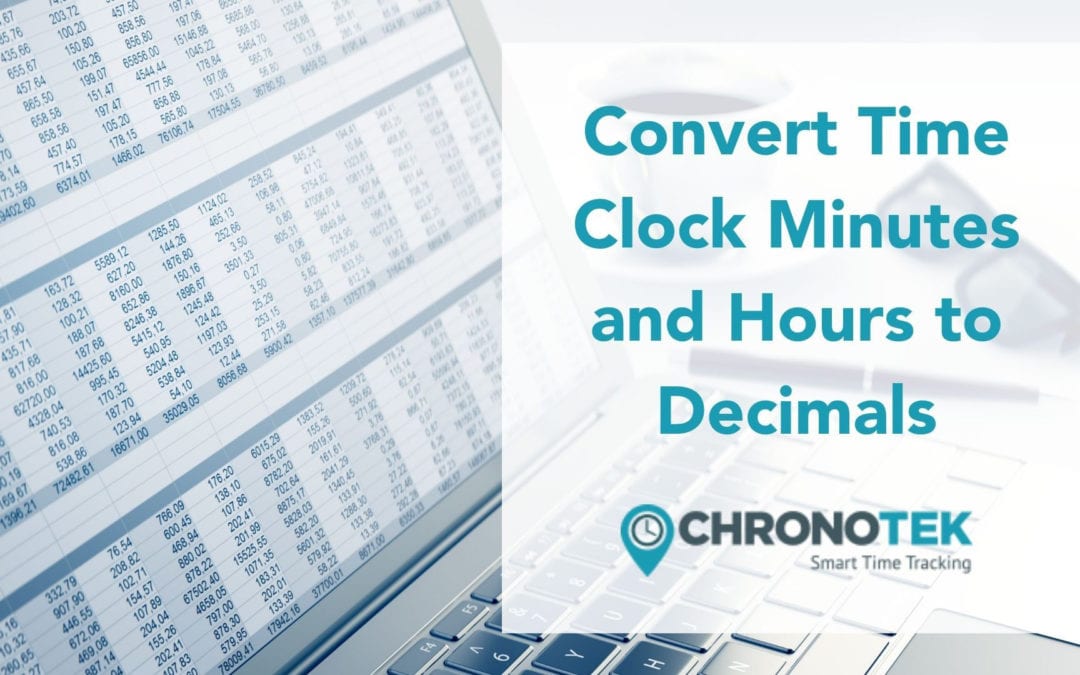











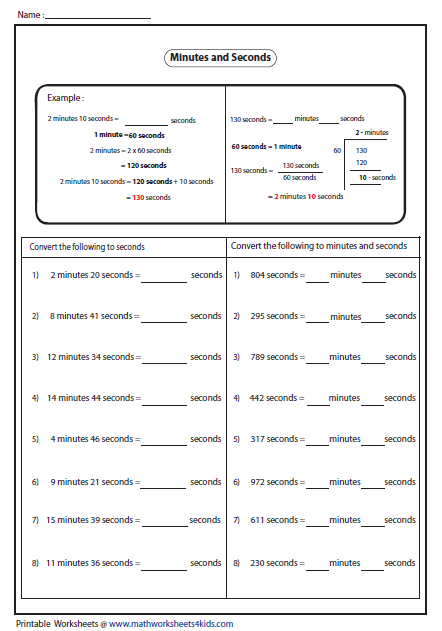

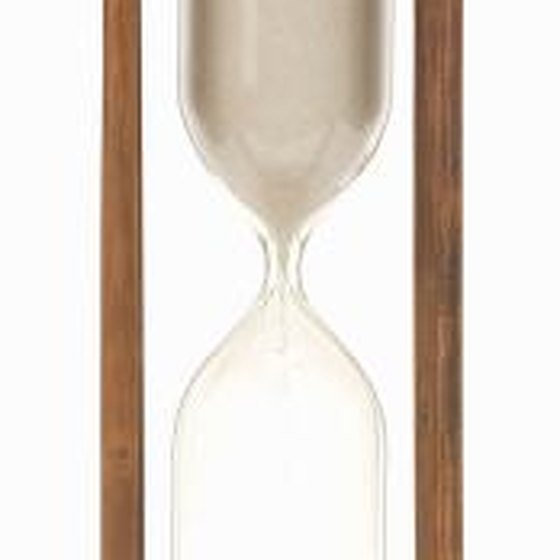
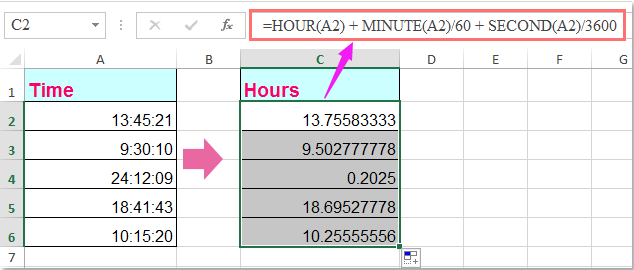

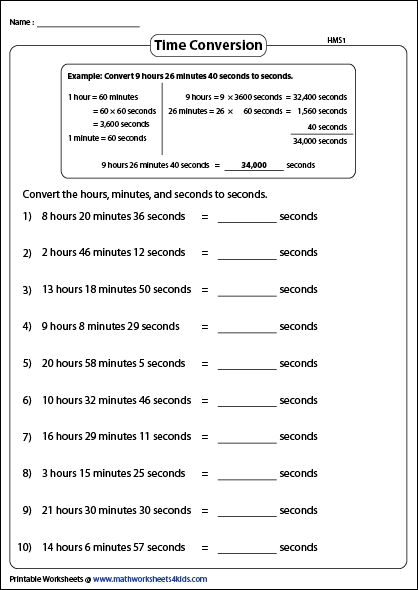



No comments:
Post a Comment
Note: Only a member of this blog may post a comment.